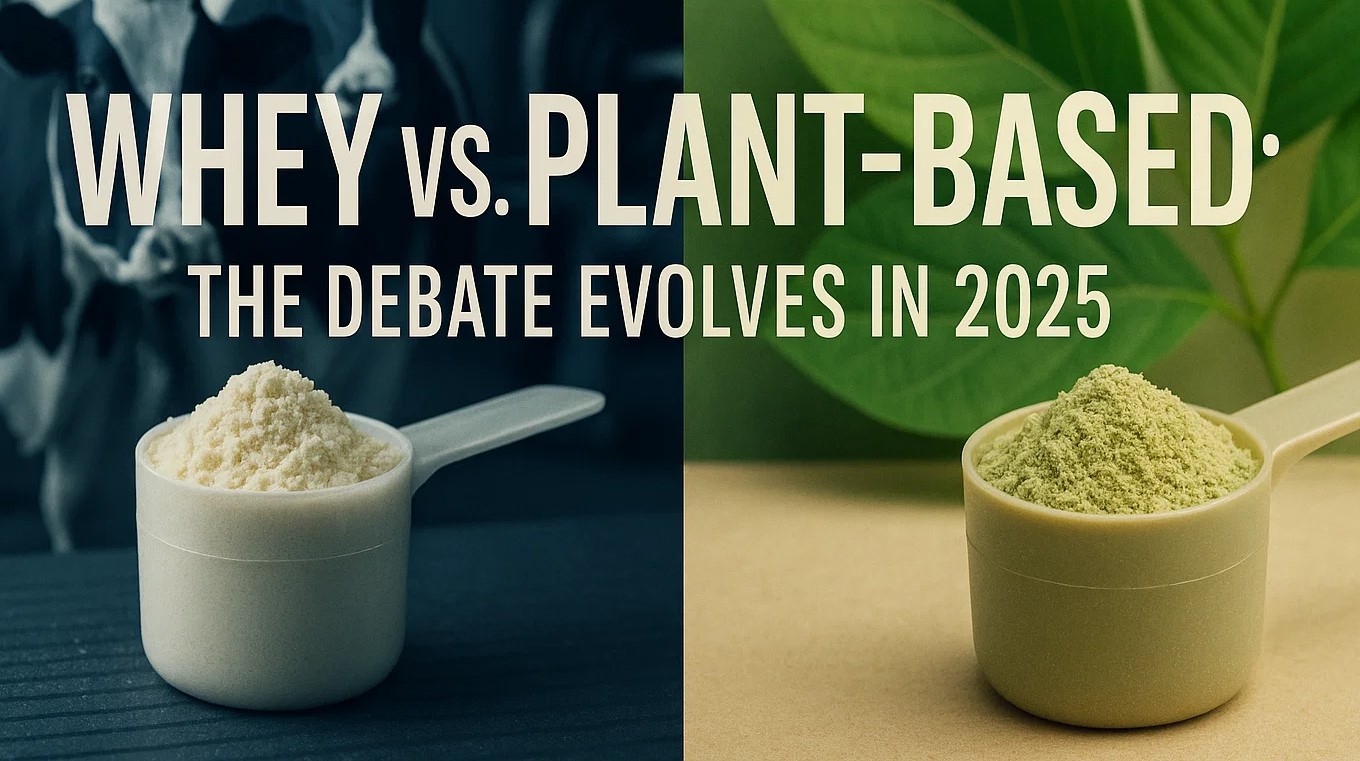Whey vs. Plant-Based Protein: Discover the Real Science in 2025

Strong 8k brings an ultra-HD IPTV experience to your living room and your pocket.
In 2025, the supplement aisle isn't just crowded—it's a full-on battlefield. On one side, you've got the OG—whey protein, with decades of trust, muscle gains, and research behind it. On the other, plant-based protein is flexing its eco-cred and digestibility game, calling out lactose and bloat like it's cancel culture for dairy.
But which one's actually better? Not according to influencers, but according to real science, real bodies, and real consumer experience?
Let's strip away the hype and get into the truth behind whey vs. plant protein.
1. Whey Protein: The Gold Standard – But Is It Still King?
What it is:
Whey is the liquid leftover when milk is curdled. It's a complete protein, rich in all 9 essential amino acids.
Key Pros:
-
Fast absorption – great for post-workout recovery
-
High leucine content – boosts muscle protein synthesis
-
Well-researched – proven benefits for muscle gain, fat loss, and recovery
Key Cons in 2025:
-
Many still have gut sensitivity, bloating, or acne from low-quality whey
-
Contamination concerns (adulteration, heavy metals in some brands)
-
Label confusion – most brands don't disclose exact amino profiles or sugar levels
💬 “Whey helped my gains, but my skin and stomach hated me until I found a clean label one.” – Aman, 28, Mumbai
2. Plant-Based Protein: Is It Just a Trend or the Future?
What it is:
Made from sources like peas, brown rice, hemp, or soy. Often blended to complete the amino acid profile.
Key Pros:
-
Easy on digestion – no lactose, no bloating (for most)
-
Lower environmental impact
-
Appeals to vegan/vegetarian users and ethically conscious consumers
Key Cons:
-
Usually lower in leucine (requires higher dose to match whey)
-
Some products are high in added sugars or fillers
-
Taste and texture still a pain point in many brands
💬 “I switched to plant protein for ethical reasons. Took time to find a brand that didn't taste like cardboard. Now I feel lighter, less bloated.” – Ritu, 32, Bengaluru
3. The Real Science: Amino Acids Don't Lie
Whey:
-
Leucine: ~2.5g per 25g serving
-
PDCAAS score: 1.0 (perfect)
-
Absorption: ~10g/hour
Plant Protein (Pea+Rice blend):
-
Leucine: ~1.6–1.8g per 25g
-
PDCAAS score: ~0.9
-
Absorption: Slower, steadier
✅ Bottom Line: Whey still leads in muscle-building efficiency per gram.
🚫 But quality matters more than the source in 2025.
4. Label Padhega India: Transparency Is the Real MVP
In 2025, Indian consumers are woke. They're flipping tubs, reading amino acid profiles, checking for “Only What's Needed” ingredients, and dodging brands that hide behind proprietary blends.
Whether you choose whey or plant – if the label's vague, skip it.
💬 “I bought a plant protein that claimed 25g per scoop but only had 18g actual protein. Scam.” – Harsh, 24, Pune
5. Digestibility & Tolerance: Know Your Gut Type
Metric
Whey
Plant-Based
Lactose issues
Possible
None
Bloating
Common with low-grade whey
Rare
Allergies
Dairy-related
Depends on source (soy, peanut cross-reactions)
Gut-friendly?
If isolate & clean
Mostly yes
🧠 Takeaway: Your gut will decide what works for you. Try both, track your digestion, and don't compromise on ingredient quality.
6. Sustainability & Ethics: Planet Gains Matter Too
In 2025, “green gains” are trending. 🌱 Plant-based protein Lower carbon footprint Requires less water Ideal for environmentally conscious users 🐄 Whey protein Still tied to dairy industry Modern ethical brands use hormone-free, pasture-raised sources 💬 “I care about fitness, but also the planet. I went plant and never looked back.” – Simran, 30, Delhi
7. Mythbusters: Stop Believing These Lies
❌ “Whey = steroids.” ❌ “Plant protein can't build muscle.” ❌ “More protein = better gains.”
Nope. It's literally just milk protein.
Wrong. You just need to hit your leucine threshold (~2.5g/serving), which is possible with blends.
Not unless you're training properly. Focus on quality and timing.
8. Consumer Testimonials: What India's Saying in 2025
🗣 “After 3 brands, I found one that's honest about every ingredient. Now I check every label. No more gut surprises.” – Kartik, Mumbai 🗣 “Plant protein fits my lifestyle better. But I had to try 4 brands to find one that didn't taste like chalk.” – Pooja, Delhi 🗣 “I don't care if it's plant or whey—if the label is vague, I don't buy it. I want transparency.” – Suresh, Hyderabad
9. Still Can't Decide? Use This Comparison Table
Feature |
Whey Protein |
Plant-Based Protein |
|---|---|---|
Complete Protein |
✅ Yes |
✅ (only in blends) |
Leucine Content |
Higher |
Lower (unless blended) |
Digestion |
May cause issues |
Usually smoother |
Sustainability |
Lower |
Higher |
Muscle Building |
Fast, efficient |
Slower, needs more volume |
Transparency (Depends on brand) |
Medium to High |
Medium to High |
10. 2025 Verdict: Whey or Plant – What's Best for You?
Instead of picking sides, pick your purpose.
-
🏋️ Building muscle fast? Go whey isolate, clean label only.
-
🌱 Want something light, ethical, and sustainable? Try plant-based blends.
-
🤯 Confused? Look for brands that offer both and are upfront about what's inside.
Because in 2025, the real flex isn't choosing a trend.
It's choosing transparency, tolerance, and truth.
Final Take:
Beyond the hype, real growth comes from real ingredients, honest labels, and a body-first approach. Don't let marketing pick your protein—your gut, goals, and science should.
Note: IndiBlogHub features both user-submitted and editorial content. We do not verify third-party contributions. Read our Disclaimer and Privacy Policyfor details.







